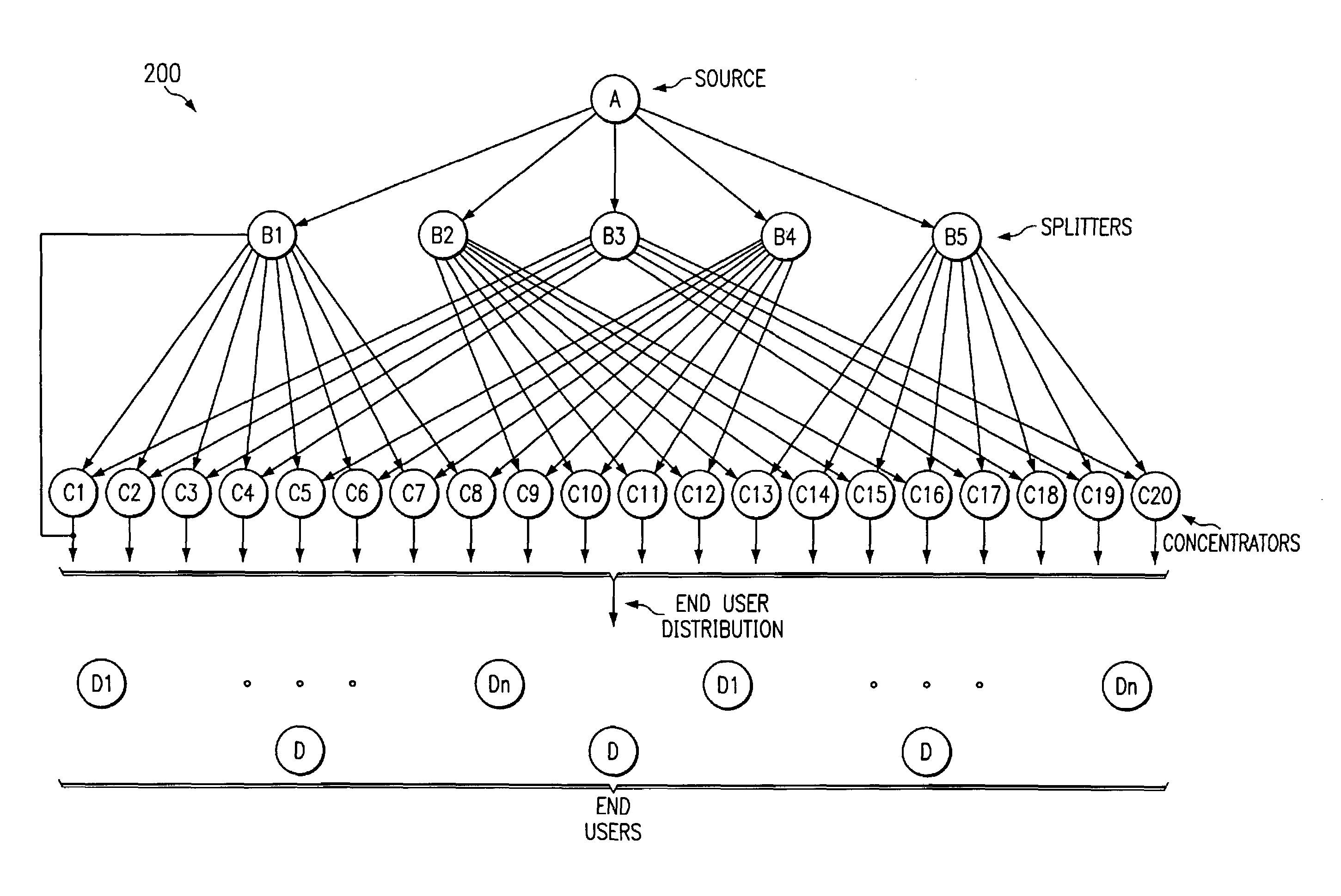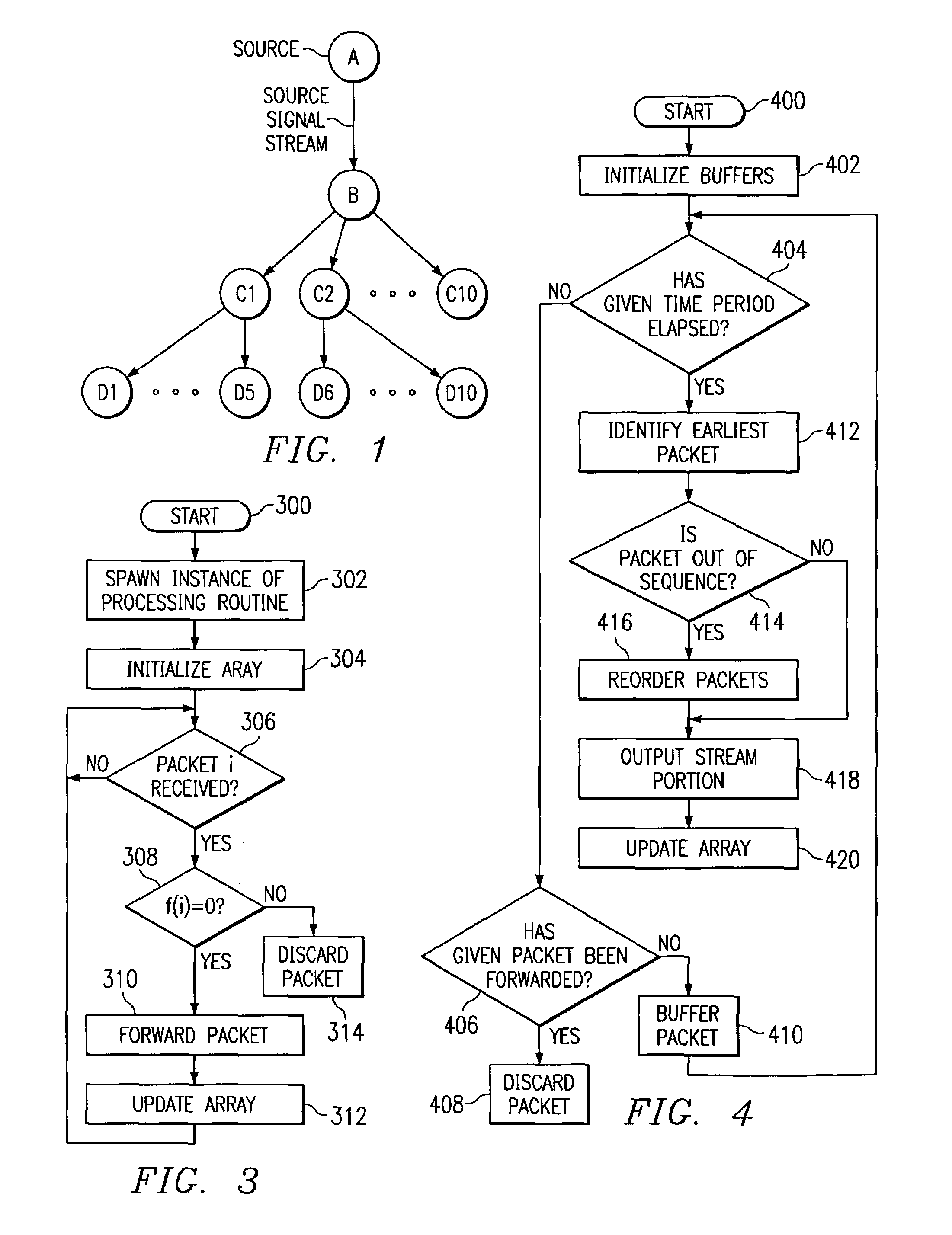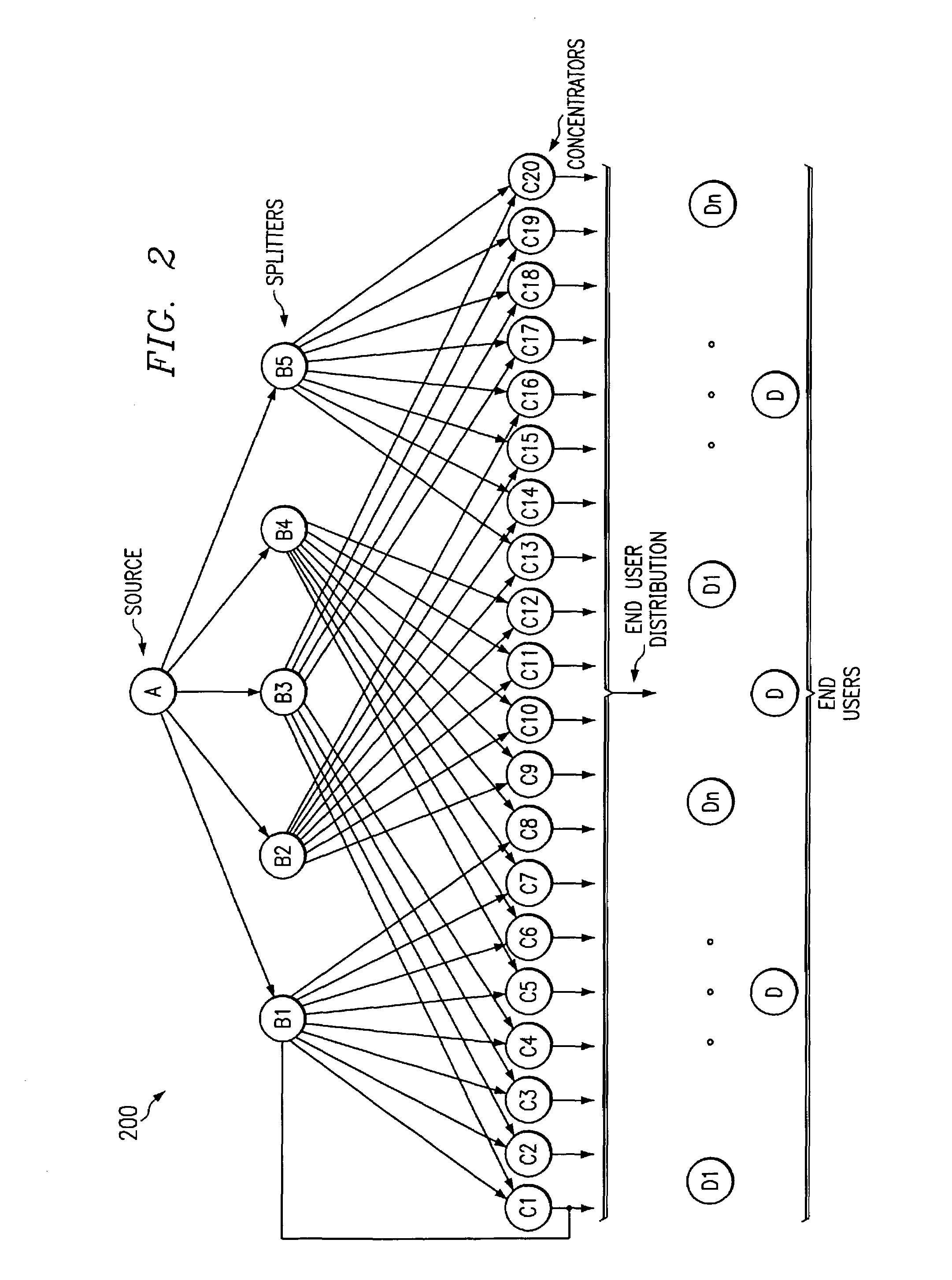Method and system for fault tolerant media streaming over the internet
a technology of fault tolerance and media streaming, applied in the field of digital signal transmission over, can solve the problems of not being fault-tolerant, not fast enough for most internet users to access the internet, and certain users being unable to receive the original signal
- Summary
- Abstract
- Description
- Claims
- Application Information
AI Technical Summary
Benefits of technology
Problems solved by technology
Method used
Image
Examples
Embodiment Construction
[0022]Streaming media is a type of Internet content that has the important characteristic of being able to play back while still in the process of being downloaded. A client can play the first packet of the stream, decompress the second, while receiving the third. Thus, the user can start enjoying the multimedia without waiting to the end of transmission. Streaming is very useful for delivering media because media files tend to be large, particularly as the duration of the programming increases. To view a media file that is not streamed, users must first download the file to a local hard disk—which may take minutes or even hours—and then open the file with player software that is compatible with the file format. To view streaming media, the user's browser opens player software, which buffers the file for a few seconds and then plays the file while simultaneously downloading it. Unlike software downloads, streaming media files are not stored locally on users' hard disks. Once the bit...
PUM
 Login to View More
Login to View More Abstract
Description
Claims
Application Information
 Login to View More
Login to View More - R&D
- Intellectual Property
- Life Sciences
- Materials
- Tech Scout
- Unparalleled Data Quality
- Higher Quality Content
- 60% Fewer Hallucinations
Browse by: Latest US Patents, China's latest patents, Technical Efficacy Thesaurus, Application Domain, Technology Topic, Popular Technical Reports.
© 2025 PatSnap. All rights reserved.Legal|Privacy policy|Modern Slavery Act Transparency Statement|Sitemap|About US| Contact US: help@patsnap.com



